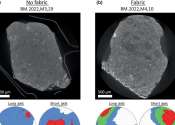Research team resolves decades-long problem in microscopy
When viewing biological samples with a microscope, the light beam is disturbed if the lens of the objective is in a different medium than the sample. For example, when looking at a watery sample with a lens surrounded by ...









